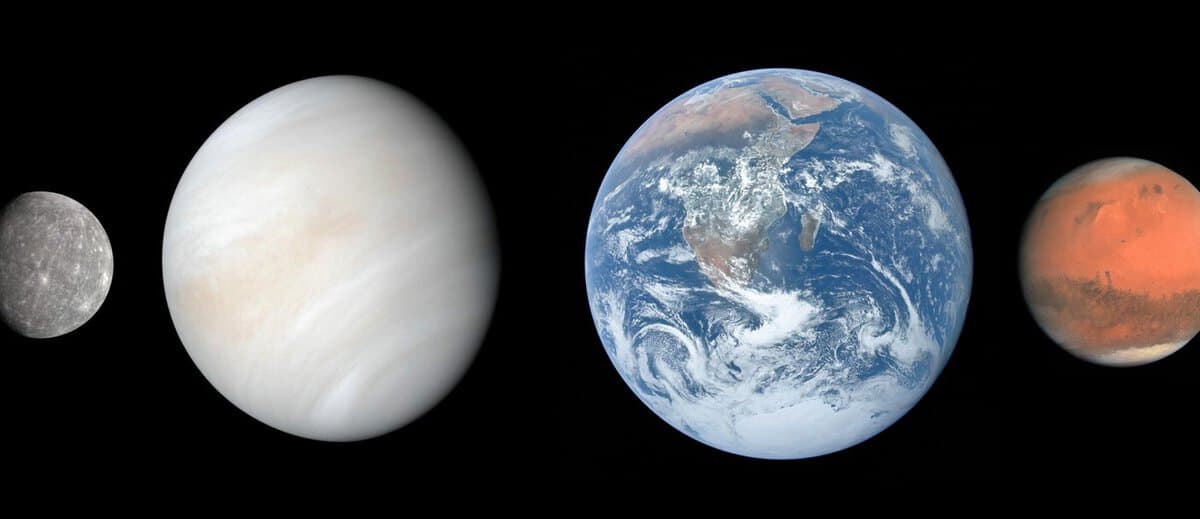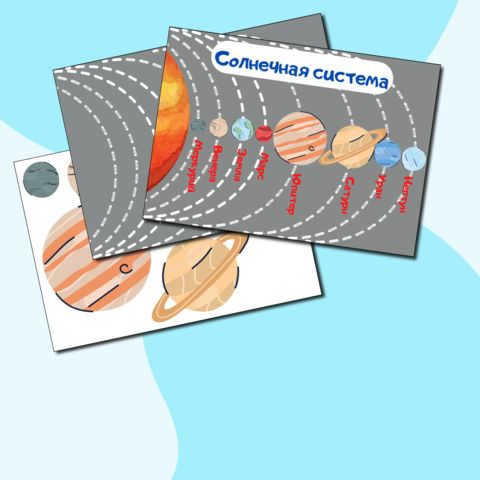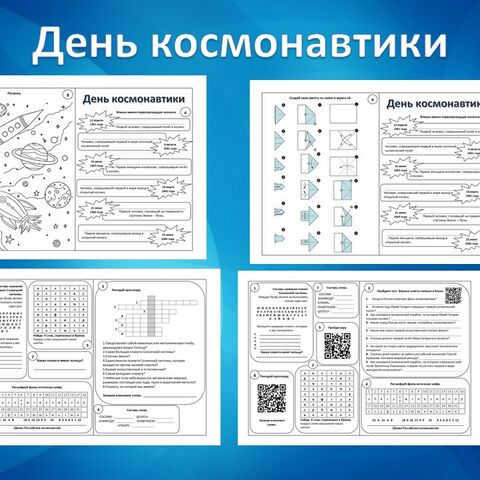1. Which planet does not belong to the group of planets that includes Earth?
2. Identify the characteristics that distinguish the Earth-group planets from the giant planets.
A) a limited number of natural satellites
B) significantly higher average density compared to water
3. Which planet is the closest to the Sun among those listed?
4. Which planet has an extremely dense and hot atmosphere consisting of carbon dioxide?
5. On which planet have dried-up riverbeds been discovered, indicating the possibility of past water flow?
1. Which planet among the following is not a terrestrial planet?
2. State the characteristics of the Earth-group planets.
A) a large number of natural satellites
B) small size and mass
C) average density is lower than that of water
3. From the Sun, which planet is positioned as the fourth?
4. Which planet always has its surface covered by a thick layer of clouds?
5. On which planet in the solar system are scientists hoping to find evidence of life, either from the past or present?
Option I 1-a, 2-b, 3-c, 4-c, 5-b.
Variant II 1-b, 2-b, 3-b, 3-b, 4-b, 5-b


Enrich your professional skills with our development course
Dealing with Bullying: The Challenges and Solutions in Child Rearing and Education
In addition to this promotional offer, we can also apply a discount specifically for your educational institution (the amount will vary based on the number of your colleagues who have previously enrolled in Infoworks courses).
Currently, there are 58,742 educational institutions benefiting from our exclusive discounts ranging from 2% to 25%. To find out the discount that applies to all employees of your educational institution, please log in to your personal Infoworks account.


Course for professional growth
Contemporary programming languages in Microsoft Visual Studio C# NET., C++. NET, VB.NET., utilizing both structural and object-oriented approaches for corporate systems development
We can include your institution’s discount along with this offer (the discount amount depends on the number of your colleagues who have already taken Infoworks courses)
Currently, 58,742 educational institutions are eligible for additional discounts (ranging from 2% to 25%). To determine the specific discount applicable to all employees of your educational institution, please log in to your personal Infoworks account.


Advanced Training Program
Introduction to Human Resources Management
We can apply a special discount for your educational establishment (based on the number of your colleagues who have completed Infoworks courses).
Currently, 58,742 educational institutions are eligible for additional discounts (ranging from 2% to 25%). To find out the discount available for all staff members of your educational institution, please login to your personal Infoworks account.


Engaging conversation prompts about career advice
Discover resources for every lesson based on your subject (category), grade level, textbook, and topic:
Over 6 million materials available in our database
The content is appropriate for the UMK
Subject
Additional resources
- Book: "Astronomy (basic level)", authored by Vorontsov-Vel’yaminov B.A., Straut E.K.
- Chapter: § 1. Astronomy’s topic
- Book: "Astronomy (basic level)", written by Vorontsov-Veliaminov B.A., Straut E.K.
- Chapter: § 21. The Sun as the closest star
- Retraining Course “Organization and Provision of Tourism Services”
- Professional development course “Formation of intercultural communication competences in the conditions of realization of FSES”.
- Retraining Course “Excursion Management: Basics of Excursion Activity Organization”
- Professional development course “Economics and Law: Taxes and Taxation”.
- Professional development course “Organization of students’ practice in accordance with the requirements of FSES of technical directions of training”.
- Professional development course “Specifics of teaching astronomy at secondary school”
- Retraining course “Organization of management in tourism”
- Retraining course “Marketing Organization in Tourism”
- Professional development course “Utilizing Active Teaching Methods in Higher Education under FSES Implementation”
- Retraining course “Astronomy: Teaching Theory and Methodology in Educational Institutions”
- Retraining course “Secretary of Head Organization with English Language Knowledge”
- Retraining course “Organization and Management of Credit Brokerage Services Provision Process”
- Retraining course “Civil Law Disciplines: Theory and Methodology of Teaching in Educational Institutions”
Leave a comment
If you think that the content violates copyright or should be removed from the website for any other reason, you can file a complaint about it. Remove content
Author of the content
- On the site: 7 years and 9 months
- Subscribers: 2
- Total views: 29711
- Total content: 34
74 minutes
Video lecture on Technology of products and organization of public catering: food technology at the catering enterprise
40 minutes
20 minutes
Gift Vouchers
The responsibility for resolving any disputes regarding the materials themselves and their content lies with the users who have posted the material on the website. However, the website administration is willing to provide all possible support in resolving any issues related to the operation and content of the website. If you become aware of any unauthorized use of materials on this website, please notify the website administration through the feedback form.
All content on the website is either created by the website’s authors or uploaded by its users and is provided for informational purposes only. The copyrights for the content belong to their respective authors. Any unauthorized copying, in whole or in part, of the website’s content is strictly prohibited without written permission from the website administration. The views expressed by the administration may not necessarily align with those of the authors.
Planets belonging to the terrestrial group are the four planets in our Solar System: Mercury, Venus, Earth, and Mars. They are situated in the inner region of the solar system, in contrast to the gas giant planets found in the outer region. The asteroid belt acts as a separator between the inner and outer regions of the solar system. In many extrasolar planetary systems, exoplanets are believed to be divided into rocky planets in the inner regions and gas giants in the outer regions, according to several cosmogonic theories. Some rocky asteroids, like Vesta, share similar structure and composition with the planets in the terrestrial group.
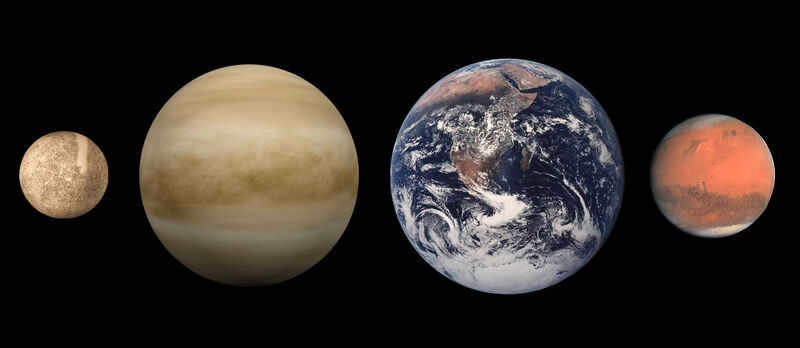

Main characteristics [ ]
The planets in the Earth group have high densities and are mainly made up of silicates (mantle) and iron (core) (unlike the giant planets and the rock-ice dwarf planets, Kuiper belt objects and the Oort cloud). The Moon has a similar structure, but with a smaller core. The largest planet in the Earth group, Earth, is over 14 times less massive than the smallest gas planet, Uranus, but about 400 times more massive than the largest known Kuiper Belt object.
Planets in the Earth group are primarily composed of oxygen, silicon, iron, magnesium, aluminum, and other heavy elements.
All planets in the Earth group have the following structure:
- The core of the Earth is primarily composed of iron with some nickel.
- The mantle is comprised of silicate materials.
- The crust is formed through partial melting of the mantle and consists of silicate rocks, but also contains incompatible elements. Among the terrestrial planets, Mercury lacks a crust, which can be attributed to its destruction caused by meteorite bombardment. The Earth stands out from other planets in the group due to its significant chemical differentiation and widespread distribution of granites in the crust.
Out of the terrestrial planets, both Earth and Mars have satellites, while none of them possess rings like the giant planets do.
Formation [ ]
can be rephrased as
Development [ ]
or
Creation [ ]
.
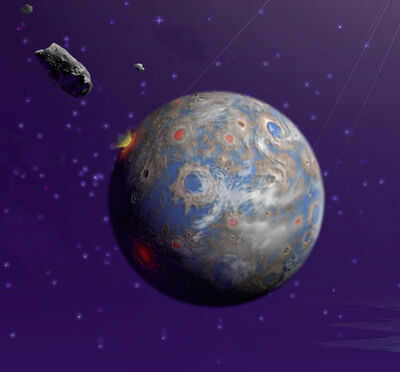
Exoplanets Similar to Earth
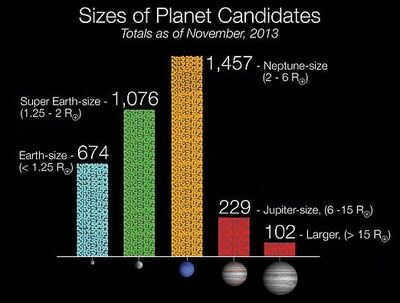
Discovery Timeline [ ]
The initial exoplanets that were detected primarily consisted of gas and ice giants, since they were the most detectable due to their substantial masses and dimensions. However, as time progressed, additional planets with Earth-like attributes started to emerge. These predominantly consist of super-Earths.
The first super-Earths were identified in 1988 within the pulsar PSR 1257+12: three planets possessing masses of 0.02, 4.3, and 3.9 Earth masses. Among these three planets, the first one still remains the lightest known. The subsequent Earth-like planets were only detected in 2005: Gliese 876 d and OGLE-2005-BLG-390L b. They possess masses of approximately 7-9 and 5.5 Earth masses, respectively.
There is a belief that planets similar to Earth are the most suitable for the development of life, which is why their search is of great interest to the general public. In December 2005, scientists from the Institute of Space Sciences in Pasadena, California announced the discovery of a star similar to the Sun, which is believed to be surrounded by rocky planets. Later on, planets were found that are only slightly larger than Earth and likely have a solid surface.
Following the refinement of data on the distance and luminosities of 130 million stars by the Gaia space telescope, it was determined that out of the 30 earth-like exoplanets that were initially discovered by the Kepler telescope, 12 (according to the most optimistic estimates) or 2 (according to the most pessimistic estimates) retained their status as potentially habitable worlds within the habitable zone in 2018.
Classification [ ]
Rephrase the text, making it unique and using the English language while preserving the HTML markup:
Classification [ ]
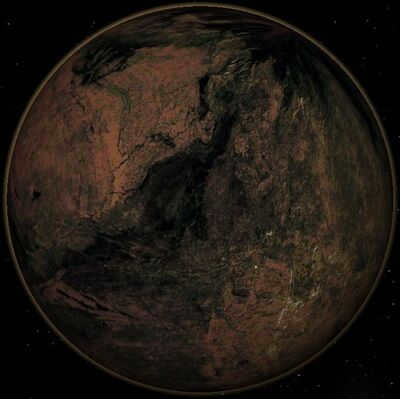
There are different classifications for planets that are similar to Earth:
- Iron planets are theoretical planets that are primarily composed of iron and do not have a mantle. The closest example in our Solar System is Mercury, with its core estimated to be 60-70% of its total mass. It is believed that these types of planets form in the inner regions of protoplanetary disks, where there is a high concentration of iron.
- Silicate planets are a type of planet that have a mantle made of silicate and a core made of iron. The planets in the Earth-group in our Solar System fall into this category.
- Carbon planets are a theoretical category of planets that possess an iron core and a carbonaceous mantle. While there are currently no known instances of such planets within our solar system, class C asteroids exhibit a similar composition.
Within our solar system, there are four celestial bodies commonly classified as Earth-group planets: Mercury (the smallest), Venus, Mars, and Earth (the largest). These planets are also referred to as the inner, terrestrial planets, as opposed to the outer gas giant planets.
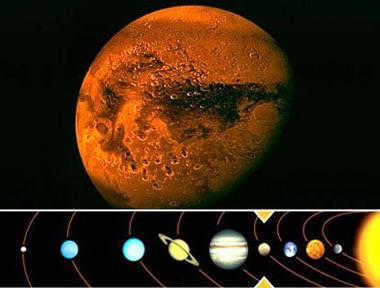
Key features
The main information about the planets in the Earth group primarily revolves around their distinct and observable characteristics. This is primarily because only one of these celestial bodies, Earth, currently supports human life.
It is common knowledge that these celestial entities possess a notable density and are comprised of iron and silicates, along with oxygen, silicon, magnesium, and aluminum. The information available regarding the planets within the Earth group indicates that each of these objects possesses a distinct composition. At the core resides iron and nickel, surrounded by a mantle composed of silicates. This is then covered by a crust consisting of silicate rocks, albeit enriched with other elements. It is worth noting that Mercury lacks a crust, which scientists hypothesize is the consequence of meteorite bombardment. Additionally, Earth and Mars both have moons, whereas Mercury and Venus do not possess any.
Earth-like
Many scientists are of the opinion that the most favorable conditions for the origin of biological life are present specifically on the planets belonging to this particular group. This is the reason why the search for and comprehensive examination of these celestial bodies has garnered heightened interest from scientists worldwide. A prime example of Earth-like planets are the renowned super-Earths. As of 2012, over fifty of them have been discovered. Scientists believe that the potential for life to emerge on each of these planets is theoretically possible.
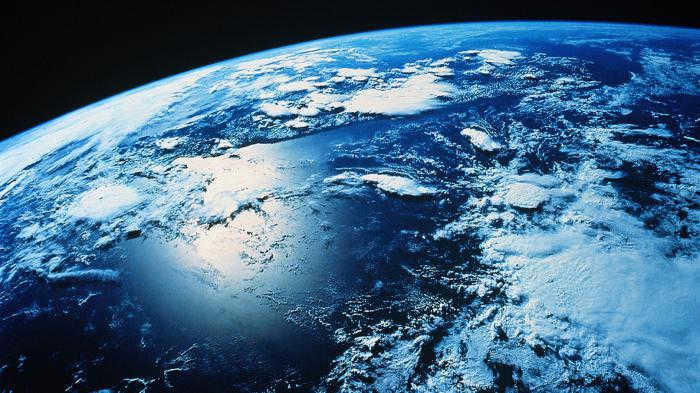
Interesting Information about the Planets in the Earth Group
Now let’s turn our attention back to the solar system. Earth, our home planet, is located third from the Sun. It is the largest among the solid planets in terms of density, diameter, and mass. Here are a few fascinating facts about our planet:
- As of now, Earth is the only celestial body known to harbor biological life.
- Earth was formed over four and a half billion years ago, and life is believed to have emerged half a billion years later.
- The presence of a magnetic field and the ozone layer helps weaken harmful solar radiation, making it possible for life to thrive on our planet.
- The Earth’s crust consists of tectonic plates that move at a rate of a few centimeters per year!
- Over 70 percent of the Earth’s surface is covered in water, with land accounting for less than 30 percent. Water is essential for all known forms of life.
- The poles of the Earth are protected by Arctic sea ice and an Antarctic ice sheet.
- According to some scientists, the conditions for life on Earth can be sustained for over two billion years, unless these conditions are disrupted artificially due to destructive and thoughtless human activities and their impact on the biosphere.
- Our planet orbits around the Sun in approximately 365.26 days, known as a sidereal year.
- The extinction of various species of organisms has been caused multiple times by asteroid impacts, resulting in significant changes in the biosphere. These and other discoveries about the planets in the Earth’s group have been made possible by the ongoing research conducted by scientists who continuously study the processes occurring within the solar system.
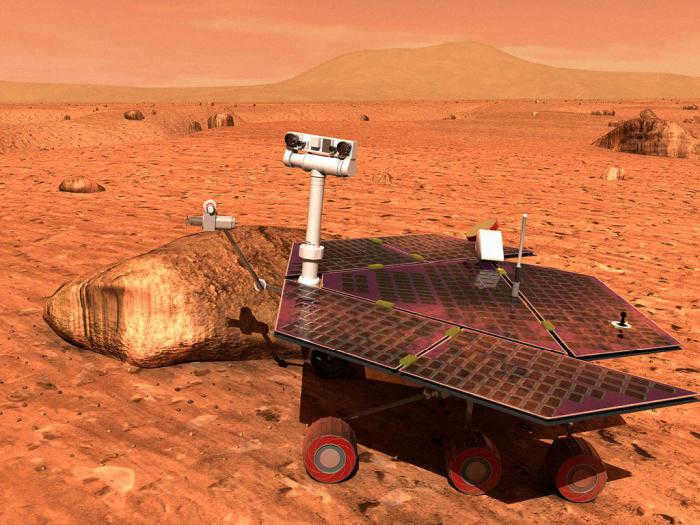
Interesting Facts about Mars
- Most people are aware that Mars is named after the god of war. It is also commonly referred to as the Red Planet because of its reddish surface, which is caused by iron oxide.
- Mars has a thin atmosphere and its surface features include volcanoes, valleys, and deserts. The planet also has ice caps at its poles.
- Mars has two moons, Phobos and Deimos, which are named after the sons of the god of war. The names Phobos and Deimos translate to “fear” and “horror” respectively. These moons are significantly smaller than our Moon and have irregular shapes.
- Did you know that the planets in the Earth group have some fascinating facts? Mars had various names in different cultures – the Egyptians called it Horus the Red, the Babylonians referred to it as the Death Star, and the Jews named it The One Who Turns Red. The reason behind these names was the reddish color of this celestial body.
- March got its name from Mars, which is quite intriguing.
- It’s interesting to note that liquid water cannot exist on Mars due to the thin atmosphere. However, ice is present on the planet, leading scientists to speculate that there might have been life on Mars at some point.
- If a person were to reach Mars without a specialized spacesuit, they would instantly die because the low pressure would cause all the oxygen in their blood to turn into bubbles.
- There is an absence of an ozone layer in the atmosphere of the planet. The radiation present there is extremely powerful and can be fatal to human beings.
- The velocity of wind during dust storms on the planet can reach a maximum of 200 kilometers per hour.
- There is a belief among certain scientists that the intersecting canyons on the surface of the planet are of artificial origin.
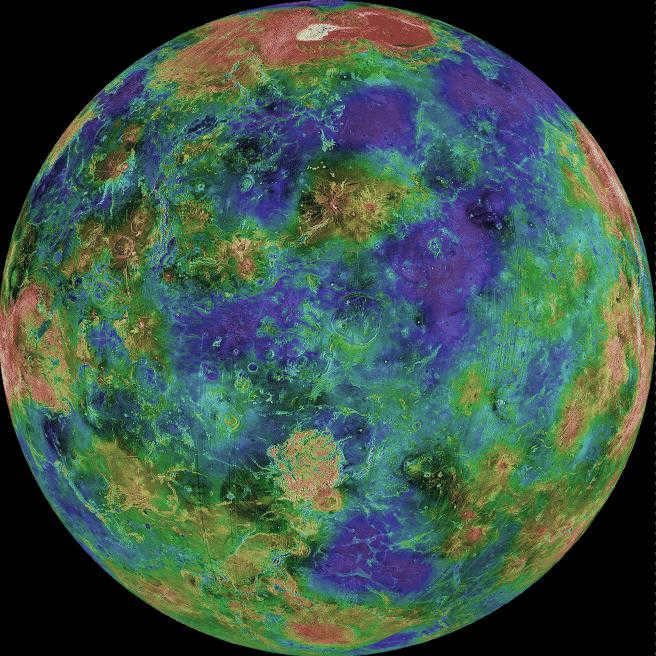
Venus
Belonging to the category known as “earth group planets,” Venus has long intrigued scientists with its unique composition and surface characteristics. Here are some fascinating facts about this celestial body:
- Venus holds the distinction of being the brightest planet in our solar system. Its luminosity is so great that on a clear night without the presence of the moon, it can cast a shadow on Earth’s surface.
- In contrast to Mercury, Venus lacks any natural satellites. Additionally, its sphere is nearly perfect in shape, unlike Earth’s slightly flattened form.
- Due to its constant cloud cover, the Sun is not visible from the surface of Venus. This also means that the planet does not experience traditional seasons.
- Due to its extremely high temperature, Venus is not a suitable environment for life.
- Interestingly, a day on Venus is actually shorter than a year on Earth!
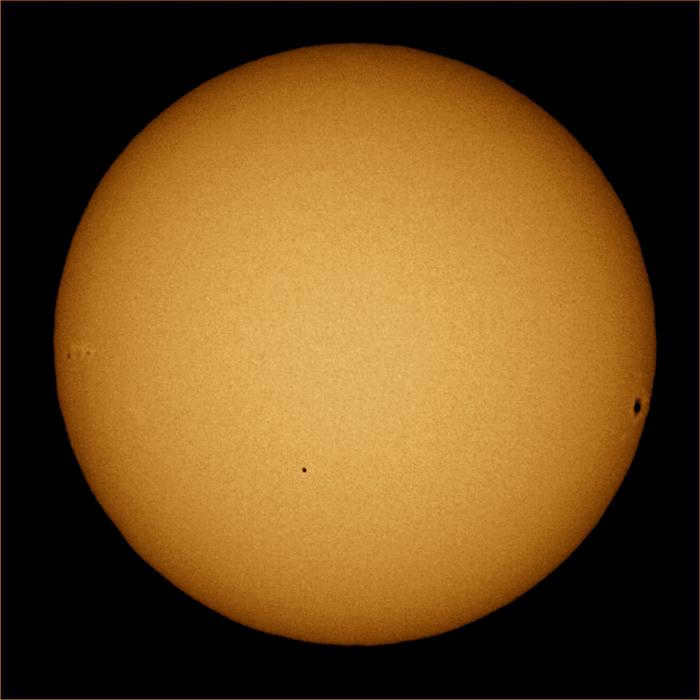
Mercury
Let’s explore a couple more fascinating details about the planets in the Earth group.
- Mercury is the smallest (after Pluto lost its planetary status in 2006) and the closest planet to our star in the solar system.
- This celestial body remains the least researched. It was only in 2009 that scientists managed to create comprehensive maps of its surface.
- A day on Mercury is twice as long as its year!
Now, let’s dive into a couple more intriguing facts about the planets in the Earth group:
- Deimos, one of Mars’ moons, rises and sets twice in a single day.
- When Mars comes close to Earth, there is a significant increase in UFO sightings.
This is a description of the Earth-group planets. The information provided by scientists about space has recently generated a lot of interest among the general public. This is mainly because there is a possibility of finding biological life on other planets and because of mankind’s increasing ability to understand the mysteries of the universe.
We can only directly study the Solar System, which is the only planetary structure accessible to us. Scientists use the information gathered from studying this part of space to gain insights into the processes occurring in the Universe. It helps us understand the origins of our system and similar ones, as well as what the future holds for all of us.
Classification of the planets in the solar system
Astronomers have been able to categorize the planets in the solar system. They have been divided into two main groups: terrestrial planets and gas giants. The terrestrial group consists of Mercury, Venus, Earth, and Mars. On the other hand, the gas giants include Jupiter, Saturn, Uranus, and Neptune. Pluto, on the other hand, was reclassified as a dwarf planet in 2006 and is part of the Kuiper Belt objects, which have different characteristics compared to the planets in the two main groups.
Distinctive Traits of Earth-like Planets
Each category possesses a unique array of qualities pertaining to their internal makeup and composition. The primary characteristics that differentiate terrestrial planets are their notably high average density and the prevalence of silicates and metals throughout all layers. Conversely, gas giants exhibit a low density and are primarily comprised of gaseous substances.
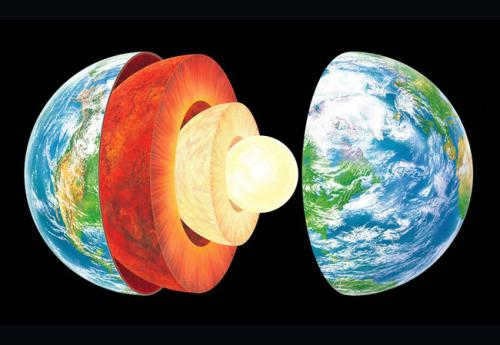
The four planets in the Earth group share a similar internal makeup: a solid crust covers a flowing mantle that surrounds a central core. This core is made up of two layers: a liquid core and a solid core, composed primarily of nickel and iron. The mantle, on the other hand, is characterized by its high levels of silicon and manganese oxides.
When it comes to size, the planets in the Earth group within our solar system follow this order (from smallest to largest): Mercury, Mars, Venus, and Earth.
The Earth-like planets were initially surrounded by an atmosphere during their early stages of formation. At first, the atmosphere was primarily composed of carbon dioxide. The development of life on Earth played a significant role in altering the composition of its atmosphere. Thus, the Earth group of planets consists of celestial bodies with an atmosphere. However, there is one planet within this group that has lost its atmospheric envelope. This planet is Mercury, which lacked the necessary mass to maintain its original atmosphere.
Nearest to the Sun
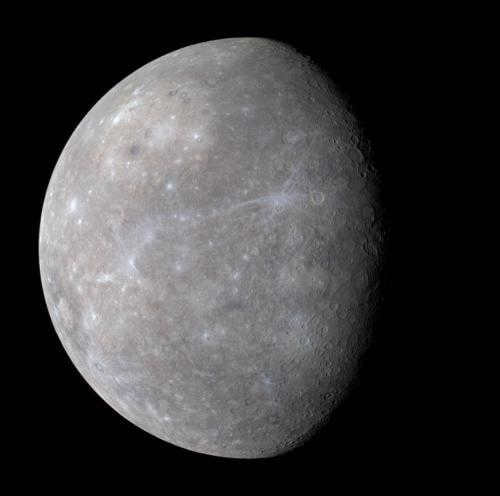
The smallest planet in the terrestrial group is Mercury. Its close proximity to the Sun makes it difficult to study. Only two spacecraft, Mariner-10 and Messenger, have provided data on Mercury since the beginning of the space age. These missions have allowed scientists to create a map of the planet and discover some of its characteristics.
Mercury can truly be considered the smallest planet in the Earth group, with a radius of just under 2.5 thousand kilometers. Its density is similar to that of Earth, and the ratio of density to size suggests that the planet is predominantly composed of metals.
The motion of Mercury presents several unique characteristics. Its orbit is highly eccentric: at its farthest point, the distance from the Sun is 1.5 times greater than at its closest point. The planet completes one revolution around the Sun in approximately 88 Earth days. However, during this time, Mercury only manages to rotate around its axis one and a half times. This behavior is not common among the other planets in our solar system. It is believed that the deceleration of Mercury’s initial faster motion was caused by the gravitational effect of the Sun.
The group of terrestrial planets consists of various celestial bodies that share some similarities but also have distinct characteristics that set them apart. While these planets have a similar structure, each of them possesses unique features that make them easily distinguishable. For instance, despite being the closest planet to the Sun, Mercury is not the hottest planet in the solar system. In fact, Mercury has regions that are constantly covered in ice. On the other hand, Venus, which is the second closest planet to the Sun, is known for its significantly higher temperatures.
Named after the goddess of love, Venus has long been considered a potential candidate for hosting life. However, subsequent explorations of the planet have debunked this hypothesis. The true nature of Venus is masked by its dense atmosphere, which primarily consists of carbon dioxide and nitrogen. This atmospheric composition contributes to the greenhouse effect, resulting in surface temperatures that can reach a scorching +475 ºC. Consequently, Venus is inhospitable to any form of life.
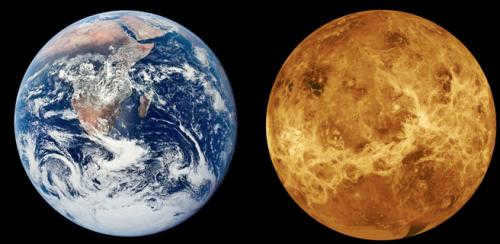
Venus, the second largest planet in terms of size and distance from the Sun, possesses a multitude of distinctive characteristics. It stands out as the brightest celestial body in the night sky, second only to the Moon. Notably, its orbit takes on an almost perfect circular shape. Moreover, Venus rotates on its axis from east to west, a remarkably uncommon direction among most planets. It completes a full revolution around the Sun in 224.7 Earth days, while a single rotation on its axis lasts for 243 days, meaning that a year on Venus is actually shorter than a day.
The planet closest to the Sun after the second
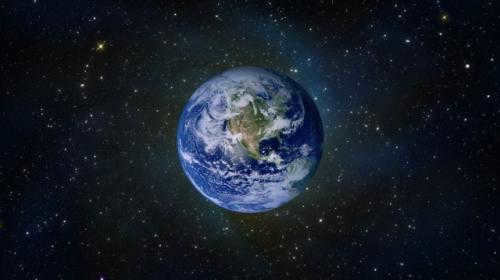
Earth possesses a multitude of unique characteristics. It resides within the habitable zone, where the sun’s rays are unable to transform the surface into a barren wasteland, yet provide enough warmth to prevent the planet from being engulfed in ice. The majority of the planet’s surface, nearly 80%, is covered by the vast oceans, which, in conjunction with rivers and lakes, constitute the hydrosphere, an entity absent in other celestial bodies within the solar system.
The formation of Earth’s distinctive atmosphere, primarily composed of nitrogen and oxygen, was facilitated by the evolution of life. The heightened concentration of oxygen resulted in the creation of an ozone layer, which, in conjunction with the planet’s magnetic field, shields Earth from the detrimental effects of solar radiation.
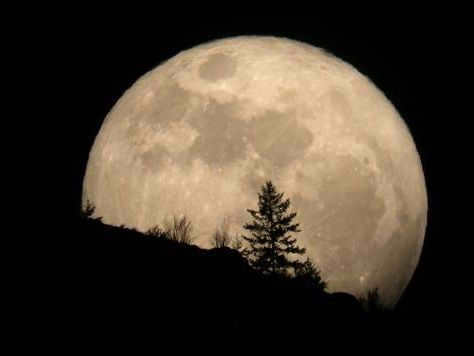
The Earth is significantly affected by the presence of the moon. Shortly after its formation, our planet acquired a natural satellite, the origin of which remains a mystery despite various plausible theories. The moon plays a crucial role in stabilizing the Earth’s axis tilt and also contributes to the planet’s deceleration. Consequently, each day becomes slightly longer. This deceleration is caused by the moon’s tidal influence, the same force responsible for the occurrence of ocean tides.
The Crimson Planet
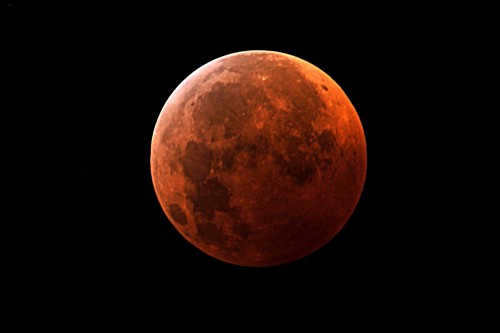
The answer to the question of which planets belong to the Earth group and are worth exploring after ours is always the same: Mars. Due to their location and climate, Venus and Mercury have been much less extensively studied.
If we compare the sizes of the planets in the solar system, Mars ranks seventh on the list. It has a diameter of 6800 km and a mass that is 10.7% of Earth’s similar parameter.
The red planet possesses a highly rarefied atmosphere. Its surface is covered in craters, and it also features volcanoes, valleys, and polar caps made of ice. Mars has two satellites. The closest one, Phobos, is gradually moving closer to the planet and will eventually be torn apart by Mars’ gravitational forces. Deimos, on the other hand, is slowly moving away from Mars.
The concept of the potential existence of life on Mars has been present for over a century. Recent research conducted in 2012 has uncovered organic matter on the crimson planet. It was hypothesized that the organics may have been introduced to the surface by an Earth rover. However, examinations have confirmed that the substance originates from Mars itself. Nevertheless, a definitive conclusion regarding the possibility of life on Mars cannot be reached without further investigation.
The planets within the Earth group are the closest celestial bodies to us in terms of spatial proximity. As a result, they have been more extensively studied. Astronomers have already identified several exoplanets that are believed to also fall under this category. Naturally, each discovery raises the prospect of finding life beyond our solar system.
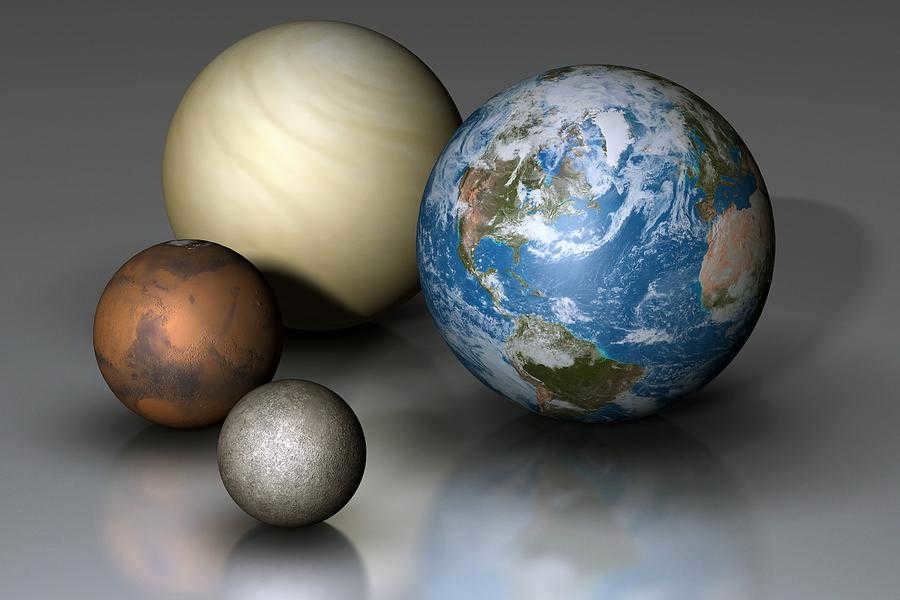
There are two main types of planets based on their physical characteristics: giant planets and terrestrial planets.
What are the terrestrial planets?
The terrestrial planets include Mercury, Mars, Venus, and Earth. These planets are relatively small and have a lower mass compared to giant planets. They have a much higher density than water and rotate at a slower speed around their own axis. Additionally, they have a smaller number of satellites, with Venus and Mercury having no satellites, while Earth has one satellite – the moon.

It is possible that the characteristics of both small and faraway Pluto can be ascribed to the planets within the same category. With a diameter exceeding 1200 kilometers, Pluto is just half the size of its own moon, Charon. There is a chance that Pluto and Charon, similar to Earth and the Moon, form a “binary planet”.
Distinctive characteristics of Earth group planets
The atmospheric properties of the planets within this group share some similarities as well as unique features. For instance, Mars and Venus possess their own distinct atmospheres, whereas Mercury, along with the Moon, has a nearly negligible atmosphere. Venus has a relatively high atmospheric density due to its composition predominantly consisting of carbon dioxide and sulfur compounds. On the other hand, the Martian atmosphere is sparsely populated with oxygen and nitrogen, making it very thin. The surface pressure on Venus is nearly one hundred times greater than that on Earth, while Mars lags behind Earth by a factor of 150 in this regard.
The outer layer of the terrestrial planets is composed of solid material, similar to the Earth’s surface and its moon. Mercury, like the Moon, is abundant in craters. However, the number of “seas” on Mercury is considerably smaller than on the Moon. These craters are primarily formed by meteorites colliding with the surface. This allows us to identify younger surface areas – the more craters, the older the region.
The surface of Venus is known for its vast expanse of rocks and rocky deserts, as evidenced by the initial photopanoramas transmitted from the planet’s surface by the Venus series of automated stations. Extensive research on Venus’s surface has unveiled a multitude of small craters spanning from 30 to 700 kilometers in diameter. Although Venus’s surface is flatter compared to other planets in the Earth group, it still showcases impressive mountain ranges and elongated hills that surpass the size of Tibet.
Approximately two-thirds of Earth’s surface is covered by oceans, whereas Mercury and Venus lack any accessible water sources.
Mars is abundant in craters, with the majority of them concentrated in its southern hemisphere. The planet also features distinct dark areas, referred to as seas, which cover a significant portion of its surface. Some of these seas span over 2,000 kilometers in diameter. Additionally, there are bright areas characterized by orange and red colors, resembling the continents on Earth. These elevated regions are known as continents. Mars is home to large volcano cones, similar to those found on Venus. The most noteworthy of these cones is Olympus, which stands at a staggering height of over 25 km. The crater has a diameter of 90 km, while the base of this colossal volcano spans more than 500 km. Evidence of past volcanic activity can be seen in the form of lava flows, canyons, and gorges, indicating that Mars experienced powerful eruptions millions of years ago. These eruptions also led to the movement of surface plates on the planet.
What are the similarities between the Earth-group planets?
The Earth-group planets share a similar structure, with a metallic core surrounded by a silicate shell. They also have comparable surface features, such as craters, mountains, canyons, and elevations. The presence of these features is influenced by two factors: the presence of water and tectonic activity.
Additionally, these planets have secondary atmospheres, which are either formed from fallen comets or through volcanic activity. In terms of moons, the Earth-group planets have few or none. Mercury and Venus lack moons, Earth has one satellite – the Moon, while Mars has two moons called Phobos and Deimos, which resemble asteroids more than planetary satellites.
Distinguishing Characteristics of the Planets in the Earth Group
- One notable difference among these planets is their unique rotation patterns. While Earth completes a full revolution in 24 hours, Venus takes up to 243 days to complete one rotation around its axis.
- Venus stands out as the only planet in this group that rotates in the opposite direction to its orbital motion around the Sun.
- Both Mars and Earth have nearly identical axis angles in relation to their orbital plane, whereas Venus and Mercury have significantly different angles.
- The atmospheres of these planets vary greatly, ranging from Venus with its dense carbon dioxide atmosphere to Mercury with almost no atmosphere at all.
- Mercury and Venus lack significant amounts of water, while Earth’s surface is predominantly covered by water, accounting for two-thirds of its total surface area.
- Unlike the other planets in this group, Venus does not possess a typical iron core.
The initial atmosphere of Earth-like planets was formed right after their formation. It mainly consisted of carbon dioxide, which was produced during the layer-by-layer separation process immediately after the accretion phase. The presence of life on Earth greatly influenced the chemical composition of its atmosphere: the amount of carbon dioxide decreased and the proportion of oxygen increased. Mercury and the Moon lacked sufficient mass to retain an atmosphere. In contrast, the atmospheres of Mars and Venus contain higher levels of carbon dioxide compared to Earth.
Satellites of the terrestrial planets
Mercury and Venus do not possess any natural satellites. Therefore, let us focus on the satellites of the Earth and Mars.
The Moon, Earth’s Satellite
Among the terrestrial planets, our Earth is fortunate to have one satellite – the Moon. The Moon has been extensively studied, surpassing any other celestial body in terms of exploration. Furthermore, it is the only celestial body that humans have set foot on.
Although commonly known as a satellite, the Moon could theoretically be classified as a planet if its orbit revolved around the Sun. With a diameter of almost 3.5 thousand kilometers, it even surpasses the size of Pluto.
The Moon is a significant part of the Earth-Moon gravitational system. While it may not be very large, it shares a common center of mass with the Earth.
Out of all the celestial bodies in the universe, the Moon exerts the strongest influence on the Earth, second only to the Sun. One remarkable manifestation of this influence is the occurrence of lunar tides, which cause fluctuations in the water levels of the Earth’s oceans.
The entire surface of the Moon is adorned with craters. This is due to the fact that the Moon lacks its own atmosphere to shield its surface from meteorites. Additionally, the Earth’s natural satellite is devoid of both water and wind, which would otherwise help to smooth out the impact sites of meteorites. Over the course of its existence, spanning a staggering four billion years, the Moon’s surface has accumulated an immense number of craters.
The Moons of Mars
Mars possesses two diminutive moons, Phobos and Deimos, which were discovered in 1877 by A. Hall. Interestingly enough, Hall was on the verge of giving up his search for Mars’ satellites, but he was convinced otherwise by his wife. Miraculously, the very next day, Hall stumbled upon Deimos. And just six days later, he discovered Phobos. On the surface of the latter, he encountered an enormous crater measuring ten kilometers in diameter, which is roughly half the width of Phobos. As a tribute to his wife, Hall named the crater Stickney, after her maiden name.
Both moons bear the shape of an ellipsoid. However, due to their small size, the gravitational forces are insufficient to mold them into a more spherical form.
Interestingly, the influence of Mars on Phobos leads to a gradual decrease in its velocity, causing the satellite’s orbit to gradually shift closer to the planet. Eventually, Phobos will succumb to the gravitational pull of Mars and collide with its surface. This process is estimated to take around eleven million years, with the satellite approaching the planet’s surface by approximately nine centimeters every hundred years. Meanwhile, Deimos, the other Martian satellite, is steadily moving away from the planet and will eventually be overcome by solar forces. As a result, Mars will eventually be left without any satellites.
Similar to the Moon, the Martian satellites always appear on the same side of the planet. This is because their rotation period around Mars coincides with their rotation period around their own axis. This characteristic makes them reminiscent of the Moon, whose far side is perpetually hidden from view from Earth’s surface.
Phobos and Deimos are of a very small size. Their size is dwarfed by the lunar diameter, which is 158 times larger than Phobos and 290 times larger than Deimos.
There is an ongoing debate among researchers regarding the origin of Mars’ satellites. One theory suggests that they may have been asteroids that got trapped in Mars’ gravitational field. However, their unique structure contradicts this theory. Another hypothesis proposes that the two satellites were formed as a result of the fragmentation of a single Martian satellite in the past.
The formation of the planetary surfaces being considered can be attributed to the primary activity of volcanoes. Initially, during the planets’ high temperatures, volcanic activity was incredibly intense. Over time, the surfaces of these planets were further shaped by the movement of tectonic plates, volcanic eruptions, and the impact of meteorites.
When examining Mercury’s surface, it bears resemblance to that of the Moon. However, there is one notable distinction – the occasional presence of nearly perfect flat regions. These areas are older than their lunar counterparts as they formed during meteorite impacts.
The Martian surface is characterized by its reddish hue, which can be attributed to a significant amount of iron oxide impurities. Craters are primarily concentrated in the southern hemisphere of Mars. The exact reason for this phenomenon is yet to be determined by scientists. It could be the result of an unknown cataclysm or perhaps the presence of an ancient ocean in that particular region.
There is evidence to suggest that in the past, rivers once flowed on the surface of Mars, as indicated by the dried up riverbeds that remain. In addition to its river systems, Mars is also intriguing due to its impressive volcanoes, some of which are of astonishing size.
Chemical Composition and Density of Terrestrial Planets
Gas giants, like Jupiter, typically consist of helium and hydrogen in their composition, as these gases are more abundant. Regardless of how these substances are combined, the end result is a planet that is predominantly composed of gas.

